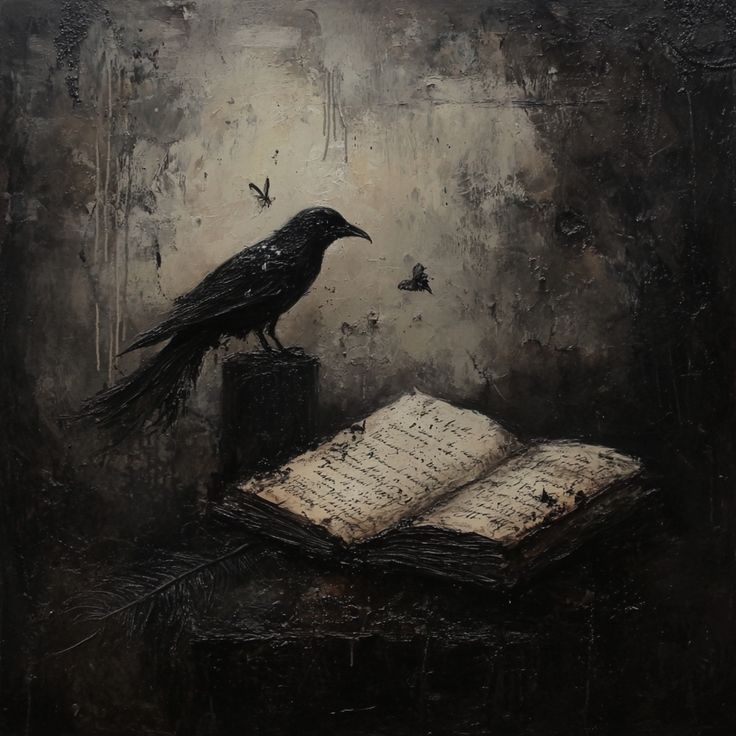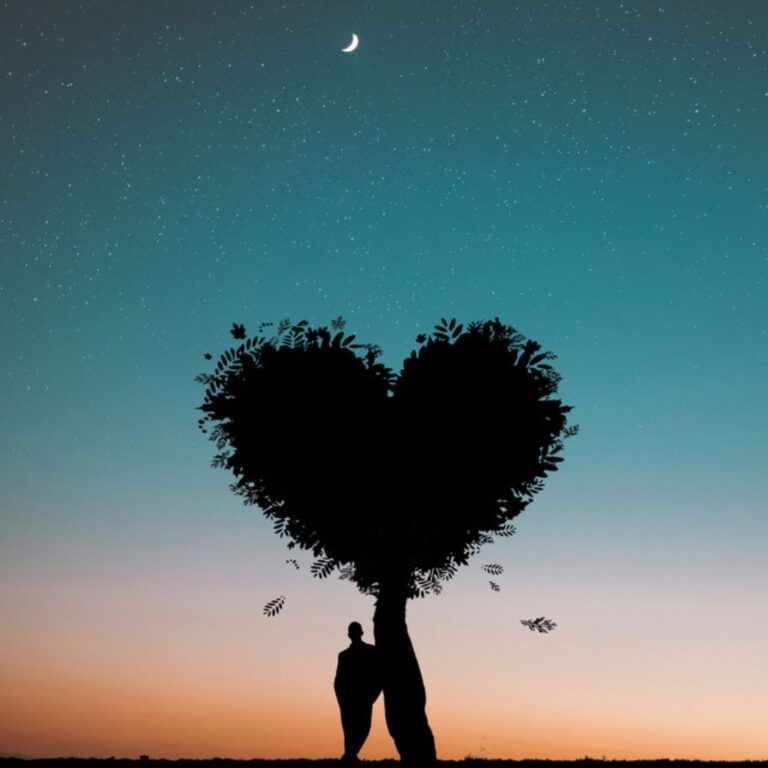From the vaults of darkness, despair, and poetic brilliance—welcome to the world of Poe, where the word “evermore” echoes endlessly.
Introduction: When Darkness Falls, the Raven Calls
Picture this: A cold December night. The wind howls outside your chamber window. You’re alone, reading by candlelight, grieving a love long lost. Suddenly, a knock—soft but insistent—at your door. You open it, only to find… nothing. But when you return to your lonely room, a shadow glides in, perching upon a bust of Pallas above your door. It’s not just any bird—it’s The Raven.
Welcome to the literary world crafted by Edgar Allan Poe, the master of melancholic mystery. If you’ve ever been curious about what makes this poem so unforgettable—or how a single word like “evermore” can haunt generations—then settle in. You’re about to take a journey not just through a poem, but through madness, memory, and mourning.
This article from Riya’s Blogs isn’t just an analysis—it’s an experience. So grab your metaphorical candle and let’s explore the shadows together.
The Genius of Edgar Allan Poe
Before diving into “The Raven,” let’s understand the man behind the masterpiece. Edgar Allan Poe was no stranger to grief and loss. His life was painted in shades of sorrow—losing his parents at a young age, facing poverty, and watching his wife Virginia succumb to illness.
It’s no surprise that his writings often tap into themes of death, loneliness, and the supernatural. But unlike other writers, Poe didn’t just write about these things—he felt them. And through his characters, especially in “The Raven,” those feelings leap off the page with chilling intensity.
Poe didn’t just pen a poem; he whispered it from the void of his own pain.
The Raven’s Entrance: More Than Just a Bird
Let’s talk about the star of the poem: the raven.
Now, here’s something most people don’t know—there’s actually a longstanding debate about raven vs crow. While they’re often confused, ravens are larger, more mysterious, and capable of mimicking human speech—making them a perfect symbolic fit for Poe’s eerie tale.
This isn’t just some blackbird fluttering in through a window. The raven becomes a symbol, a presence, and possibly even an omen. Poe could have chosen any bird—but he chose this ebony-feathered harbinger of despair.
By the way, if you’re wondering about “ebony meaning”—it refers to a deep, rich black, often used in poetic language to describe darkness, gloom, and elegance. The raven’s feathers aren’t just black—they’re ebony, dripping with poetic weight.
“Once Upon a Midnight Dreary”: Setting the Stage
Right from the opening line—“Once upon a midnight dreary, while I pondered, weak and weary…”—we’re introduced to the countenance of a man broken by grief. His face (his countenance) is likely pale, haunted, sleepless. He’s not just tired. He’s weary—emotionally, spiritually, perhaps eternally.
He’s trying to distract himself with “quaint and curious volumes of forgotten lore.” The use of quaint here is key—it suggests something old-fashioned, perhaps even comforting in its antiquity. He’s not looking for answers in logic—he’s seeking refuge in the mystical.
When suddenly… tap, tap, tap.
Cue the chills.
The Raven Speaks: “Nevermore” or “Evermore”?
And then it happens. The bird, bold as ever, perches above his door and speaks a single word:
“Nevermore.”
It’s this repetition that becomes the drumbeat of the narrator’s descent. Each time the raven responds, it echoes not just words—but fate. Nevermore will she return. Nevermore will he know peace.
But here’s a twist to chew on: could the raven have said evermore instead?
Let’s reflect. Evermore would suggest an eternal continuation, a possibility of something ongoing. Nevermore, on the other hand, shuts the door—forever. Poe’s genius lies in this contrast. By giving us a bird that could’ve promised hope (evermore), he instead delivers despair (nevermore).
A Glimpse of Lenore: The Woman Behind the Madness
Every broken man has a story, and for Poe’s narrator, that story is Lenore.
While she never appears physically in the poem, Lenore’s presence is everywhere. Her name, whispered in anguish. Her memory, enshrined in silence. She represents not just lost love—but perhaps purity, peace, and everything the narrator can never reclaim.
Here’s where “heart copy and paste” comes in. If you’ve ever loved someone so deeply that they became part of your heartbeat—imagine losing them. The pain isn’t just emotional—it’s etched into your soul, copied and pasted into every beat of your heart.
The Raven’s Message: Madness or Meaning?
As the poem unfolds, the narrator begins to unravel. He implores the raven for answers. Is there peace? Is there balm in Gilead? Will he see Lenore again in the afterlife?
And always, always the raven replies: “Nevermore.”
It’s easy to ask—was the bird really speaking, or was this just the manifestation of a breaking mind? Poe leaves that question lingering, letting the reader implore for clarity, much like the narrator himself.
There’s a certain lack of decorum in the raven’s presence—he invades the sanctity of the narrator’s room, perches where he shouldn’t, and answers with relentless finality. (By the way, if you’re wondering about “decorum meaning”—it refers to proper behavior or manners. And this raven? He doesn’t give a fig.)
Symbolism in Every Stanza
Like all great poetry, “The Raven” is layered with symbols:
- The raven: Death, fate, the subconscious, maybe even time itself.
- Midnight: The threshold between days—symbolic of transitions and endings.
- The bust of Pallas: Wisdom. Logic. Perhaps a contrast to the madness that follows.
- The shadow that falls: As darkness falls, so does the narrator’s hope. He’s not just visited by the raven—he’s claimed by it.
Each line, each metaphor, and each word choice carries weight. It’s a masterclass in poetic storytelling.
Raven’s Home: Why It Still Haunts Us
In a strange way, “The Raven” has become immortal. From scholarly analysis to memes, from literature classes to shows like Raven’s Home, Poe’s influence stretches across centuries and cultures.
And yes, even “Blackbird lyrics” by The Beatles echo similar themes—loss, sadness, and the search for light in darkness. There’s something universal about this imagery of dark birds and darker emotions.
The Final Stanza: The Soul Beneath the Shadow
“And my soul from out that shadow that lies floating on the floor / Shall be lifted—nevermore!”
The poem ends not with a scream, but with a quiet surrender. He doesn’t fight the darkness. He embraces it.
This is where Poe’s work resonates the deepest. In a world obsessed with happy endings, he gave us honesty. He gave us a reflection of how some hearts never mend, how some sorrows are evermore.
Echoes of the Raven — From Pop Culture to Personal Pain
It’s astonishing how a poem written in 1845 still stirs imaginations in 2025. That’s not just good writing—it’s eternal storytelling. And “The Raven” is more than just gothic gloom. It’s become a cultural phenomenon.
You’ll find subtle nods to Poe’s raven across film, music, art, and even television. Ever watched Raven’s Home on Disney? It’s far from tragic poetry, but the name itself hints at the cultural imprint Poe’s raven left behind. The bird isn’t just literature—it’s legacy.
And speaking of music, the “Blackbird lyrics” from The Beatles reflect similar poetic energy:
Blackbird singing in the dead of night / Take these broken wings and learn to fly…
See the echo? A lone bird, nightfall, brokenness, and the ache for release. Even when Poe isn’t directly referenced, his thematic fingerprints are everywhere.
A Modern Reflection: How Poe Still Resonates
Let’s get personal for a moment.
Have you ever stared into the dark—literally or metaphorically—and asked for a sign? A whisper? A message from someone you lost? Maybe a breakup that left you feeling weary, or the passing of someone who was your soul’s mirror?
There’s a reason Poe’s narrator implores the raven with such desperation. He isn’t just speaking to a bird—he’s speaking to the unbearable silence of grief. To the cold void where once lived love and light.
In a way, every one of us has that moment when darkness falls and we sit alone, hoping to find comfort in the rustling pages of a book, or perhaps, in the soft flutter of wings.
Tis the Word That Echoes: “Tis Some Visitor…”
Poe uses the word “’Tis” repeatedly—and for a good reason. It’s old-fashioned, yes, but it creates an atmosphere of mystique and timelessness.
“’Tis some visitor,” I muttered, “tapping at my chamber door.”
It’s that false comfort we tell ourselves when we’re scared. “It’s just the wind.” “It’s nothing.” “It’s only my imagination.”
But what happens when it’s not just the wind? What happens when that tapping becomes truth?
Tis not just a poetic contraction—it’s a reflection of denial. Of rationalizing the irrational. And it’s these little touches that show us just how deeply Poe understood the human psyche.
The Raven vs. Crow Debate: Why It Matters
Let’s take a curious detour.
So many people wonder: raven vs crow—what’s the actual difference?
On the surface, both birds look similar—large, black, mysterious. But ravens are typically bigger, with heavier beaks and a deeper, more guttural croak. Crows caw; ravens croooaaak. Creepy, right?
But symbolically, ravens have long been associated with prophecy, fate, and death. From Norse mythology (Odin’s two ravens, Huginn and Muninn) to Native American lore, the raven has always been the messenger between worlds. Poe didn’t choose this bird by accident.
It’s the perfect bridge between the living and the lost, the conscious and the subconscious. The raven isn’t just a character—it’s a doorway.
Lessons from Poe: What The Raven Teaches Us
Now let’s get real—why should you care about a 19th-century poem?
Because the themes in “The Raven” are timeless:
- Grief doesn’t always offer closure.
- Love, when lost, leaves a scar deeper than time.
- The mind, left alone in sorrow, can become its own prison.
And most importantly:
- Not all questions have answers.
That’s what makes the poem hit so hard. The raven doesn’t explain himself. He doesn’t tell the narrator why he’s there. He just speaks… nevermore.
That, dear reader, is the brilliance of Edgar Allan Poe.
Revisiting the Vocabulary: Poe’s Word Magic
If you’ve ever stumbled on some of the poem’s vocabulary and paused—don’t worry. Let’s break down a few tricky gems that bring the poem to life:
- Ebony meaning: Not just black, but rich, dark, and almost regal. It’s why the raven’s feathers feel so poetic.
- Countenance: A fancy way to say face—but it carries emotional weight. Think of a haunted expression.
- Decorum meaning: Proper conduct or etiquette. The raven, perched like a rude house guest, has none.
- Implore: To beg, almost desperately. Think pleading with fate or a higher power.
Poe was meticulous with language. Every word adds mood, mystery, and emotion.
The Final Shadow: What Happens After the Poem Ends?
Here’s a theory: the narrator never recovers.
When he says,
“And my soul from out that shadow… shall be lifted—nevermore,”
he’s accepted his fate. The shadow—the raven—is no longer just a visitor. It’s part of him now. Maybe it always was.
Some readers believe the raven is a real bird. Others think it’s a projection of his grief, his descent into madness. But either way, the result is the same: he is changed.
That’s the haunting beauty of the piece. It lingers, just like the raven itself, perched in the back of your mind long after you finish reading.
Final Thoughts: Carrying Poe Into the Future
So where does that leave us in the 21st century?
Reading Poe, especially “The Raven”, is like staring into a still pool and seeing your own reflection ripple. His words resonate because the pain they express is universal. Timeless.
Whether you’re listening to enchanted lyrics on a rainy night, reading your favorite poem by candlelight, or scrolling through your phone at 2 AM feeling that familiar ache of something lost—Poe understood that feeling.
And with just one raven, he captured it. Forever. Evermore.
So next time you see a blackbird in the distance, hear a word that stings, or feel the weight of grief settle into your chest—remember, you’re not alone. Poe was there first. And through The Raven, he’s still there, whispering, writing, waiting.

Want to read a bit more? Find some more of my writings here-
Daily Uplift: 101+ Motivational Quotes to Start Your Day Right
The Umbrella’s Mouth: A Short Horror Story
Book Review: Fifty Shades Darker
I hope you liked the content.
To share your views, you can simply send me an email.
Thank you for being keen readers to a small-time writer.







